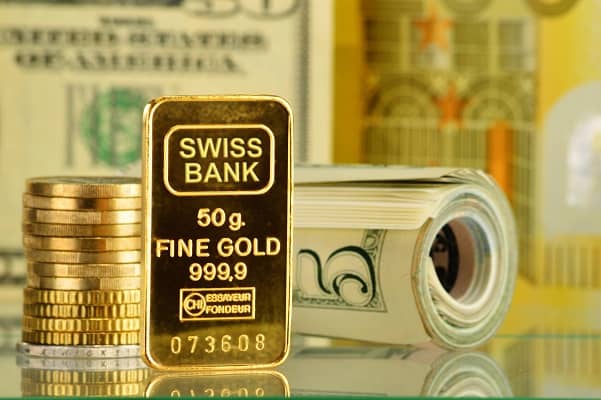Investors are fleeing to safe-haven assets during times of geopolitical uncertainty. Gold is considered one of these safe assets during turbulent periods.
It saw strong gains of 3.5% on Friday but quickly retreated from its peak levels on Monday’s trading, currently hovering around $1,920.
As the conflict in Palestine escalated last week with an intensifying attack on Gaza, market demand shifted from riskier assets to safe-haven plays. Gold prices surged and closed at $1,933 on Friday, up from their low of $1,868 per ounce within hours. However, gold prices have now dipped to $1,910 at the start of today’s trading as market participants closely monitor the ongoing conflicts in Palestine.
The situation in Palestine is deteriorating, and a full-scale military operation is increasingly likely. What are the prospects for gold prices?
Before answering, it’s essential to clarify a fundamental concept about markets in general, “The market buys the rumor and sells the news,” a famous saying on Wall Street. Therefore, expectations for gold prices are bearish. It’s not likely that gold prices will decline in the short term, but they may fall faster than markets anticipate.
This has occurred several times in the past, with the most significant peak in February 2022 when the Russian invasion of Ukraine began.
When we focus on economic events in the United States during that period and then focus on war news exclusively, we find that gold prices continued to rise for several days but peaked for no more than two weeks before reversing to the downside.
So, in the case of the ongoing conflict in the Middle East, when might this reversal occur? I believe it may happen after several days or no more than two weeks of the actual attack, both of which could occur this week.
In reality, gold prices dipped on Monday morning after the most significant upward surge since mid-March of this year due to growing concerns about the situation in the Middle East and increased demand for safe-haven assets.
However, since then, there hasn’t been a significant escalation in news related to the actual attack, causing gold to decline slightly. But it could rise again due to any news of an actual attack in the Middle East, which is currently the least likely scenario.
On the other hand, U.S. bond yields are rising slightly, negatively affecting non-interest-bearing assets like gold. This is especially the case after the markets have “priced in” interest rate expectations “cautiously” and currently anticipate a reduction of approximately 165 basis points by the end of 2024.
This drastic change suggests the possibility of the Federal Reserve’s interest rate hike cycle peaking, which may only support gold prices if this possibility aligns with weaker U.S. economic data and less hawkish statements from Federal Reserve officials in the future.
Some Federal Reserve officials will speak today, but the focal point and the most critical data for this week will come from U.S. retail sales data tomorrow and additional statements from Federal Reserve officials, including Federal Reserve Chairman Jerome Powell, followed by weekly jobless claims data.






Leave a Comment